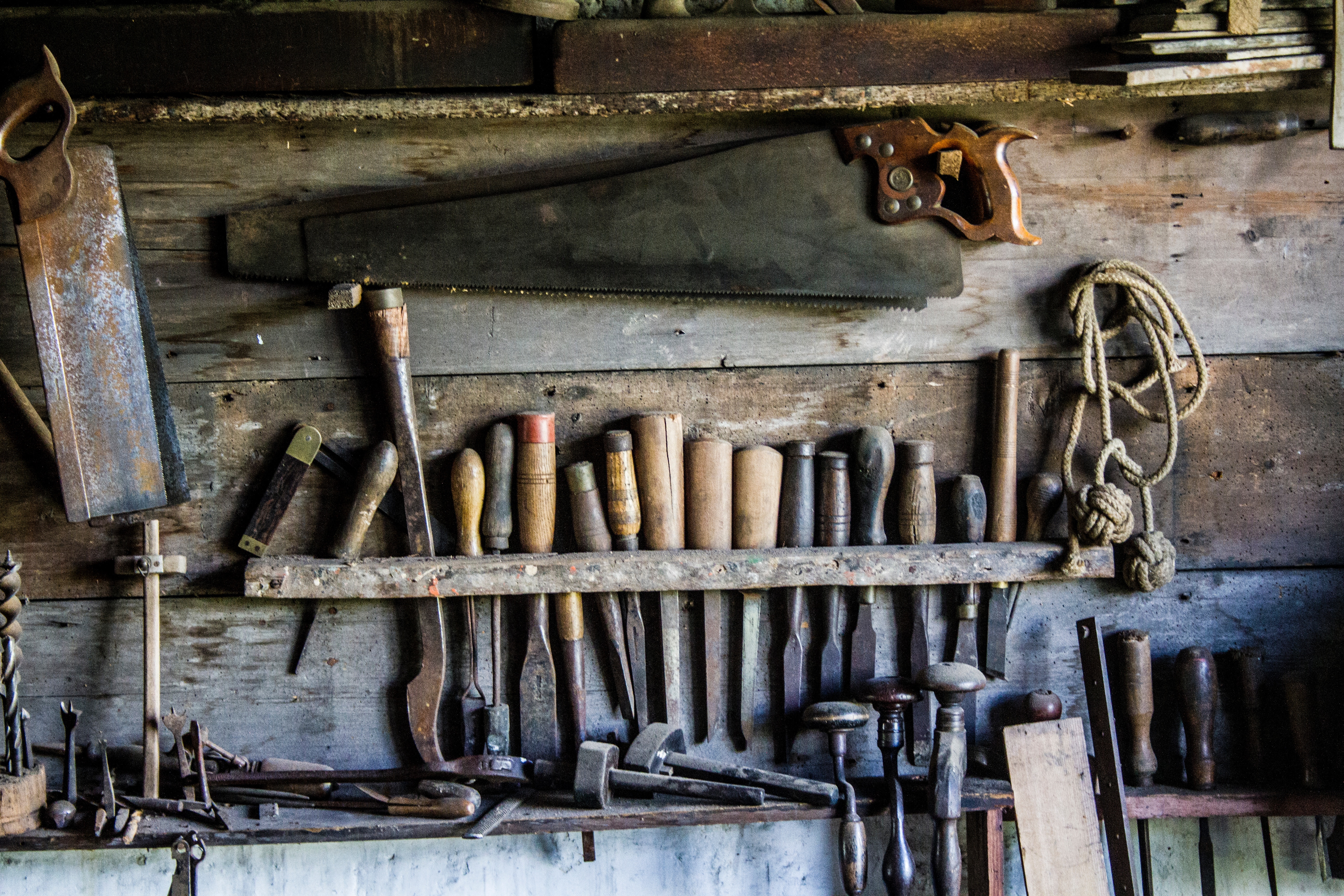Homesteading How-To: Different Types of Wood and How to Use Them

Image source unsplash.com
If you've read my previous post on how to get your homestead to pay for itself there are several ways you can put the trees on your homestead to work for you.
Before you get started though, you need to know what types of tree work best for what projects. Some wood is better for creating furniture, some wood works best for fence posts. In addition to different types of wood having different properties such as tight grains, or being hard, you have to keep in mind the difference between green and seasoned wood.
As wood dries it will shrink, but green wood can be used for fence posts, shingles, etc. More delicate projects such as building furniture should be made out of seasoned wood. If you're cutting down trees on your property, you'll want to take into consideration the time it'll take to cure.
There are several ways you home cure your wood. If you're doing smaller projects you can microwave your wood, boil it in water (I know - sounds weird), smoke it, or if you've made large planks with an Alaskan mill, for example, you can stack your boards in a barn or attic, etc. and let it air dry.
The Foxfire Series goes into great detail on how the homesteaders of old Appalachia would use the wood they had available to them. If you don't have a copy of the foxfire series, I highly recommend it! They talk about everything from how to butcher a pig, how to build a cabin from scratch, to old ghost stories.
CHESTNUT
Chestnut trees tend to grow fairly straight and the wood is soft and light and relatively easy to work with. A favorite of pioneers, it was used for practically everything. Green chestnut was used for fence posts, doors, cabin walls and joists. Seasoned, it could be used for furniture, cutting boards and kitchen spoons. Unfortunately, in the early 1900's a blight swept through the United States that killed every native chestnut tree. Most chestnut trees you'll find now are Chinese hybrids, but the wood works just the same.
HICKORY
Wood from hickory trees is hard, heavy and durable. However, it has a very wavy tight grain that makes delicate work difficult. Green hickory was used for making fires - it is slow to light, but it produces a lot of heat and burns for a long time once it's lit. Seasoned hickory makes great tool handles, wagon wheel spokes and hubs. It is flexible but durable.
OAK
Oak is one of the most versatile woods around. Thin strips can be used for weaving baskets and chair bottoms. It can be used for roof shingles, wagon beds, fencing, flooring, furniture, barrels, buckets, etc.
LOCUST
Locust is incredible hard and difficult to work. In fact, it's so dense it doesn't shrink when dried, is pest-resistant and does not rot - even when left underground or soaked in water. For that reason it was often used to build cabins and fences. In addition to using it outdoors and in water, smaller pieces would often be used in pegs and dowels and furniture and wagon parts that do not flex.
PINE
Pine is preferred for furniture and flooring and trim work around the house that can be easily decorated. It was often used for almost every part of a cabin, fencing and can be great for fires - as long as you use seasoned. Pine tends to have a lot of sap which can cause a creosote build up in your chimney.
WALNUT
Walnut is a hard wood, however it's beauty lends it for use in furniture, flooring, and cabinets.
MAPLE
Maple is a hard wood but is light in color and is easy to work with. It can be carved very thin without it splitting so it was favored for guitars and violins. It is easy to work with in a lathe so is often used to make pens, spoons, gunstocks, etc.
CHERRY
Cherry is a hard, dense wood with a beautiful color and gently wavy gain. It's often used for furniture and cabinetry and anything where the color and grain will shine through.
ASH
Wood from the ash tree is hard with a relatively straight, fine grain, but it can often be brittle. Because of it's straight grain and dense wood it's often used for rolling pins, tool handles, and cutting boards.

Hillsborough Homesteading Blog
Hillsborough Homesteading Facebook

Thank you for contributing your knowledge to help others! This post has been added to the Sotall.org Directory of Self Sufficiency & Survival posts. One of our goals is to provide access to the knowledge of our fellow Steamians, that will still be seen, long after the 7 day period is passed. If you write any future articles with instructions on how to do any tasks related to a homestead or survival, to ensure they are added to the directory, please submit them. They will be added as soon as possible.
You can read about us here
I love that you included things that could be made from each of the different woods, best and worst uses, dangers (like creosote build up from the pine trees), etc... A very informative and helpful post that I'm happily resteeming and up voting. :D
God bless you and your family. :D Have an awesome day!
A lovely overview. Knowing which lumber to use and which woods will match each need is a valuable skills. It seems that these days, with such minimal value placed on longevity, quality, and durability, there is an anything goes perspective towards choosing the right material for the job at hand. I look forward to looking back on this information as I embark on many building projects this year.